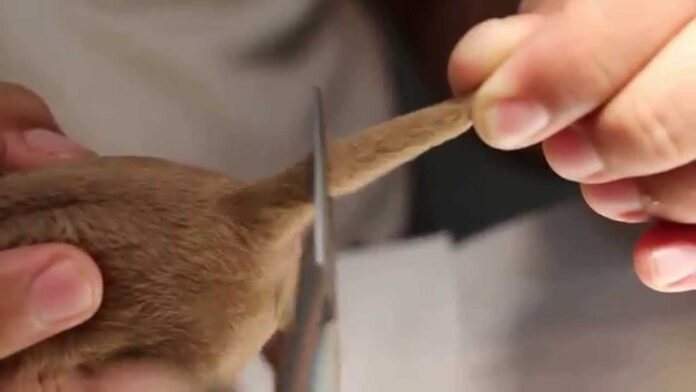
JUST over a year ago, two men were prosecuted by the Irish Society for the Prevention of Cruelty to Animals (ISPCA) after admitting to their parts in the docking of the tails of six terrier puppies. They were the first to be summonsed before the courts in relation to offences under Section 16 of Animal Health and Welfare Act, which came into force on March 6, 2014. Legislation has outlawed the docking of puppies’ tails and the removal of dew claws by lay-persons.
At the court hearing, ISPCA chief inspector, Conor Dowling, said, “We need to get away from the attitude that this sort of mutilation is normal practice and that some breeds don’t look right with long tails. This is just one of several cases we have instigated in relation to the illegal docking of puppies. People must be aware that to perform this act is a criminal offence and can have serious consequences”.
Tail docking is an old custom in certain dog breeds, especially working breeds. Tail docking involves the removal of all or part of the tail using cutting or crushing instruments, usually scissors or an elastic band. The tail muscles, tendons, nerves and bone or cartilage, which are all part of the spinal column, are severed. The initial pain from the amputation would be intense and at a level that would not be permitted to be inflicted on humans and has long term physiological effects as well as risk of infection.
The most common excuse for tail docking is prevention of injury in hunting and working dogs. Most dogs in the breeds that are generally docked are kept as pets and companion animals and are never used for hunting or working.
The most popular breeds used in the field or trials are Labradors, retrievers, pointers, Border collies and cattle dogs, none of which are required to have their tails docked.
Tails are a very important communication tool for dogs. Research has shown that docking can affect the interaction of dogs with other animals and people.
Some behaviourists believe the absence of a tail may predispose a dog to show unwarranted aggression to other dogs, or that they may be the victim of attacks by other dogs due to their failure to communicate properly.
We all love to see a happy dog with a big wagging tail but what if the dog has no tail to wag? How can that dog communicate effectively with other dogs to signal friendliness or play?
The BSAVA (British Small Animal Veterinary Association) and RCVS (Royal College of Veterinary Surgeons) states that they do not believe there is any scientific evidence to show that undocked working dogs damage their tails any more than undocked non-working dogs and therefore, see no justification for an exemption for working dogs.
The Kennel Club changed the breed standards, so that previously docked breeds could now be shown with tails. Cosmetic tail docking cannot be justified on scientific or medical grounds.
Unless pecuniary or traditional reasons are to take priority over the welfare of the animal, then the criteria to justify removal of a dogs tail are not satisfied.
The tail is not merely an inconsequential appendage. It is an anatomically and physiologically significant structure which has many biological functions.
The tail is important as a means of counter-balance when the dog is carrying out complicated movements, such as leaping, walking along narrow structures, chasing, racing or climbing. That should not be underestimated.
Tail docking began hundreds of years ago when people had a very different attitude to dogs and animal welfare was unheard of. Docking is thought to have been used to increase a dog’s speed [actually it has the opposite effect] and also to prevent rabies and even tax evasion.
In the 17th century, pleasure/companion dogs in England were taxed, and working dogs, designated by docking, were not. Therefore, many of the herding (farm), terrier (ratters) and some of the hunting (pointers) dogs were docked, to avoid paying the tax.
Funnily, many of the English hunting dog breeds were not docked, as hunting was a pastime of wealthy landowners, and it was a sign that they could afford the tax.
Docking tails therefore is only for the benefit of “the owner’s impression of a pleasing appearance” according to most studies.
A native of Ennis, Colin McGann has been editor of The Clare Champion since August 2020. Former editor of The Clare People, he is a journalism and communications graduate of Dublin Institute of Technology.



